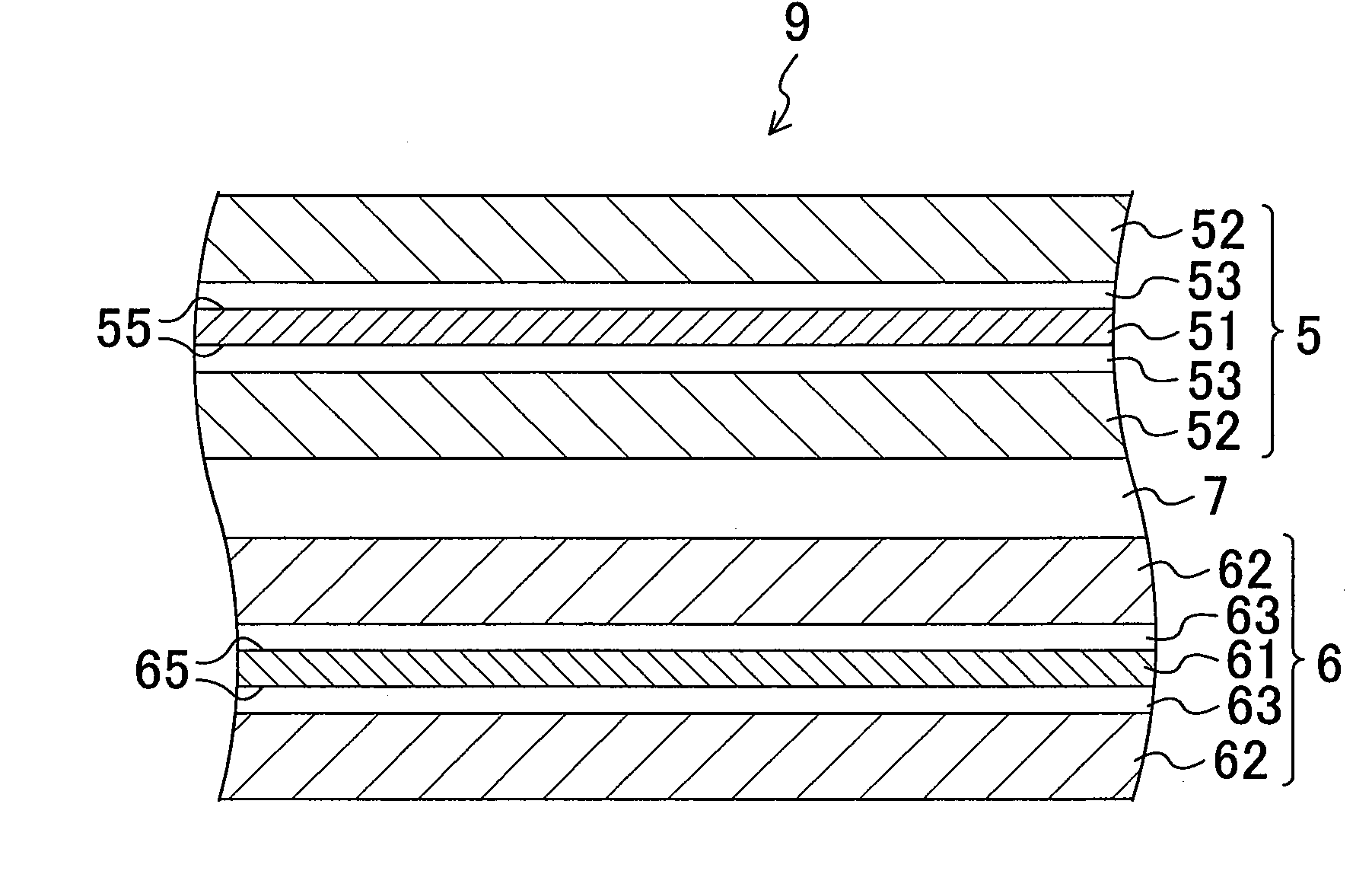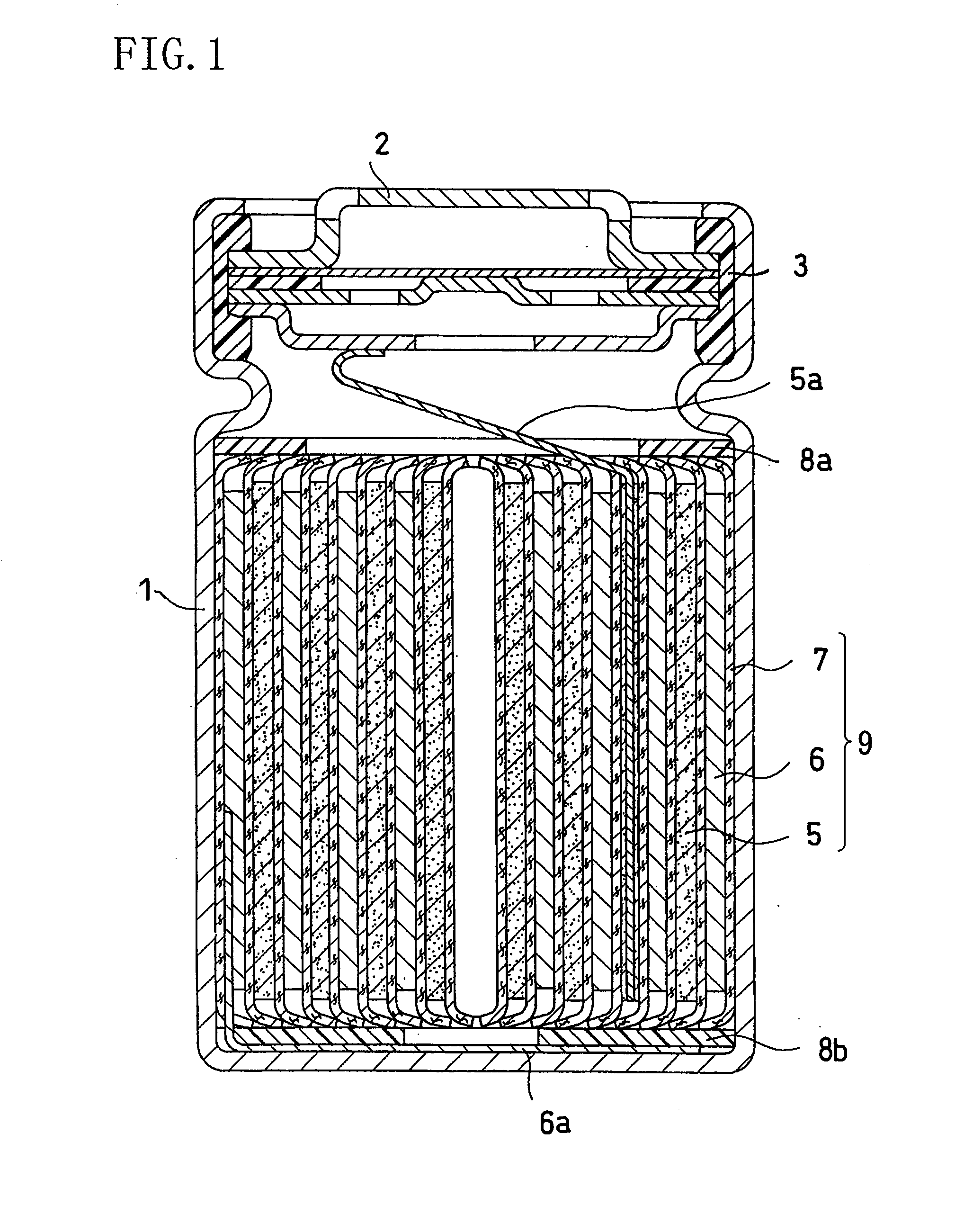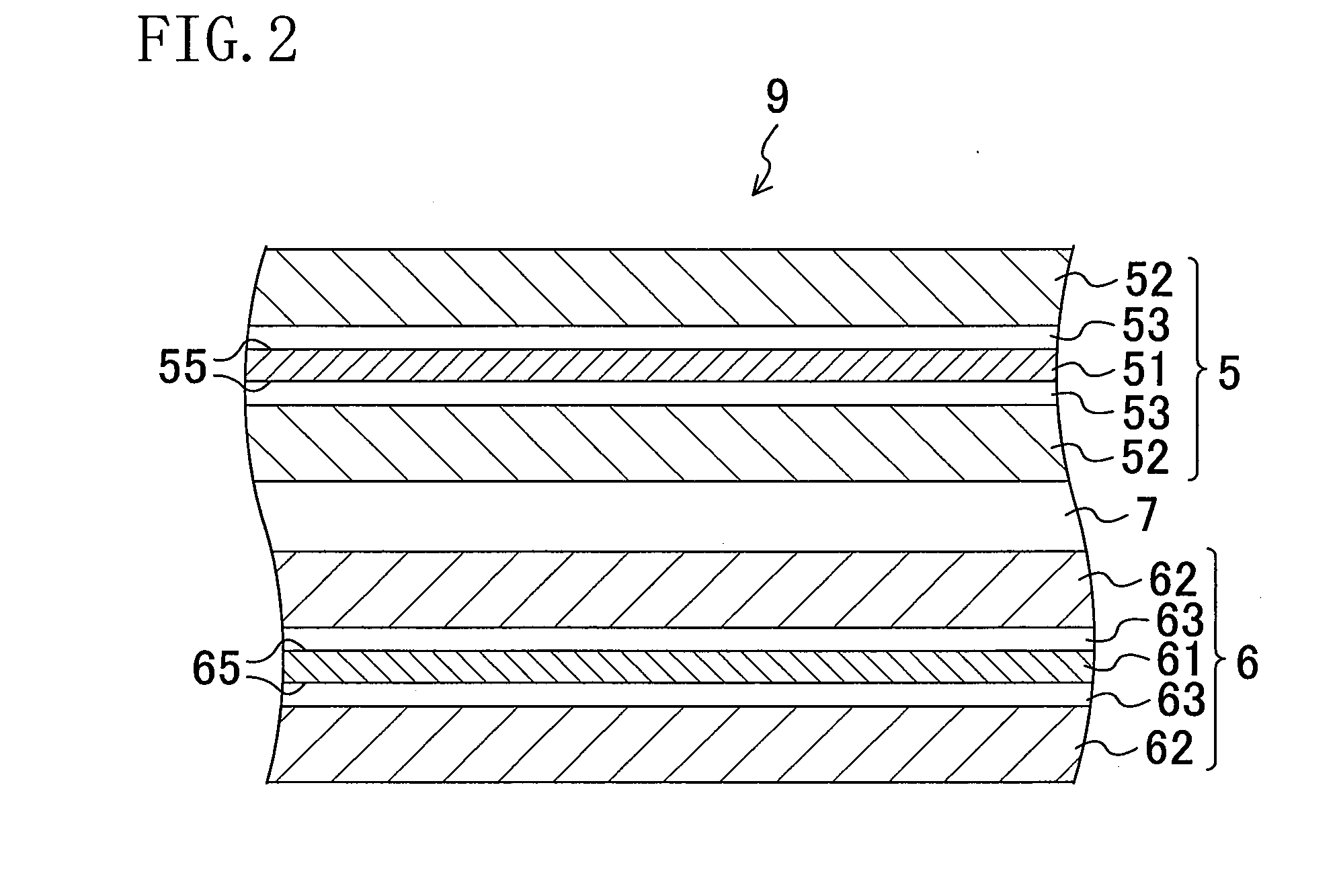Nonaqueous electrolyte secondary battery
a secondary battery and non-aqueous electrolyte technology, applied in the direction of batteries, sustainable manufacturing/processing, cell components, etc., can solve the problem of not always ensuring the safety of lithium ion secondary batteries
- Summary
- Abstract
- Description
- Claims
- Application Information
AI Technical Summary
Benefits of technology
Problems solved by technology
Method used
Image
Examples
embodiment 1
[0047]Embodiment 1 of the present invention takes a lithium ion secondary battery as an example of the nonaqueous electrolyte secondary battery. The structure of the lithium ion secondary battery will be explained below.
[0048]FIG. 1 is a vertical sectional view illustrating the structure of the lithium ion secondary battery of the present embodiment. FIG. 2 is a sectional view illustrating the structure of an electrode group 9 included in the lithium ion secondary battery of the present embodiment. FIG. 3 is a graph illustrating a general temperature characteristic of a positive electrode active material.
[0049]The lithium ion secondary battery of the present embodiment includes, as shown in FIG. 1, a stainless steel battery case 1 and an electrode group 9 placed in the battery case 1.
[0050]The battery case 1 has an opening la at the top thereof. A sealing plate 2 is crimped to the opening la with a gasket 3 interposed therebetween. The opening la is closed by crimping the sealing pl...
embodiment 2
[0109]In Embodiment 2, the structure of the positive and negative electrodes is different from that of Embodiment 1. Hereinafter, the difference from Embodiment 1 will be described.
[0110]FIG. 4 is a sectional view illustrating the structure of an electrode group 19 of the present embodiment.
[0111]The electrode group 19 of the present embodiment includes a positive electrode 15, a negative electrode 16 and a porous insulating layer 7. As the electrode group 19 includes the porous insulating layer 7, the increase of the contact area between the positive and negative electrodes 15 and 16 is prevented even if the internal short circuit occurs in the lithium ion secondary battery.
[0112]The positive electrode 15 includes positive electrode material layers 52 formed on both surfaces of the positive electrode collector 51. An expandable element 53 in the form of a layer is provided in each of the positive electrode material layers 52. The negative electrode 16 includes negative electrode ma...
embodiment 3
[0117]In Embodiment 3, the structure of the positive and negative electrodes is different from that of Embodiment 1. The difference from Embodiment 1 will be described below.
[0118]FIG. 5 is a sectional view illustrating the structure of an electrode group 29 of the present embodiment.
[0119]The electrode group 29 of the present embodiment includes a positive electrode 25, a negative electrode 26 and a porous insulating layer 7. As the electrode group 29 includes the porous insulating layer 7, the increase of the contact area between the positive and negative electrodes 25 and 26 is prevented even if the internal short circuit occurs in the lithium ion secondary battery.
[0120]The positive electrode 25 includes positive electrode material layers 52 formed on both surfaces of the positive electrode collector 51. Expandable elements 53 are dispersed on interfaces 55 between the positive electrode collector 51 and the positive electrode material mixture layers 52. Likewise, the negative e...
PUM
 Login to View More
Login to View More Abstract
Description
Claims
Application Information
 Login to View More
Login to View More - R&D
- Intellectual Property
- Life Sciences
- Materials
- Tech Scout
- Unparalleled Data Quality
- Higher Quality Content
- 60% Fewer Hallucinations
Browse by: Latest US Patents, China's latest patents, Technical Efficacy Thesaurus, Application Domain, Technology Topic, Popular Technical Reports.
© 2025 PatSnap. All rights reserved.Legal|Privacy policy|Modern Slavery Act Transparency Statement|Sitemap|About US| Contact US: help@patsnap.com



